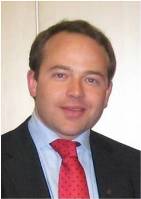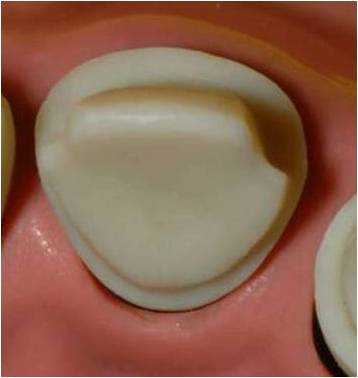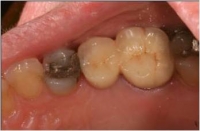Conventional Bridges: Tooth Preparation course for Dental Practice



This session will look at the principles of tooth preparation including example preparations for crowns as retainers. The concepts of retention and resistance form will also be covered as well as methods of increasing retention and resistance form with auxiliary retention features.
Learning objectives
By the end of this session you will be able to:
- list the 5 key principles of tooth preparation (as described by Shillingburg
- describe the principles of retention and resistance form with regard to tooth preparation
- explain the importance of preparation taper with regard to tooth preparations
- describe the different types of marginal finish for varying cast restorations
- describe auxiliary features that can be used to increase retention and resistance form
- apply preparation principles to the preparation of multiple bridge abutments
Full coverage crowns are the retainers of choice for bridges. Occlusal loads are higher than on single crowns and excellent retention and resistance form is needed for long term success. Occlusal load is higher on posterior teeth than anterior teeth and this is relevant to bridge design. In some low stress circumstances, in the interest of preserving tooth structure, a three-quarter gold crown or onlay restoration may be acceptable. The metal occlusal coverage would have to be aesthetically acceptable to the patient.
Before commencing this session you should have:
- knowledge of different types of cast restorations that can be provided
- basic knowledge of the process of tooth preparation
Nick graduated with honours from Newcastle University and undertook general professional training in the North East before moving to the Eastman Dental Hospital in 2003.
He completed a Masters in Conservative Dentistry in 2007 and undertook higher specialist training in Restorative Dentistry Eastman Dental Hospital and became consultant in Restorative Dentistry in 2009. He is recognised by the GDC as a specialist in Restorative Dentistry, Prosthodontics, Periodontology and Endodontics.
He now shares his time between hospital and private practice.


Ken graduated with honours from Bristol University in 1982. He gained his London fellowship in 1986 before specialising in restorative dentistry.
He completed a Masters and Senior Registrar training at the Eastman Dental Hospital and became consultant in conservative dentistry and periodontology in 1995. He is recognised by the GDC as a specialist in restorative dentistry, prosthodontics, periodontology and endodontics.
He now shares his time between hospital and private practice.
- Medical and Pharmacology | Human diseases and medi...
- Posted By eIntegrity Healthcare e-Learning
- Posted Date: 2024-11-06
- Location:Online
- This session will describe rheumatoid arthritis (RA), systemic lupus erythaematosus (SLE) and Sjögren’s syndrome. It will also identify the medications used for each condition and consider the impact of each condition on dental care.
- Medical and Pharmacology | Human diseases and medi...
- Posted By eIntegrity Healthcare e-Learning
- Posted Date: 2024-11-06
- Location:Online
- This session provides an overview of some of the clinically important respiratory challenges you may come across as a dental practitioner.
- Medical and Pharmacology | Human diseases and medi...
- Posted By eIntegrity Healthcare e-Learning
- Posted Date: 2024-11-06
- Location:Online
- This session describes the signs and symptoms that may manifest in patients diagnosed with common renal problems and the relevance of common renal disorders to the delivery of dental care.
- Medical and Pharmacology | Human diseases and medi...
- Posted By eIntegrity Healthcare e-Learning
- Posted Date: 2024-11-06
- Location:Online
- This session will look at the relevance of common neurological disorders to the delivery of dental care by the dental practitioner.
- Medical and Pharmacology | Human diseases and medi...
- Posted By eIntegrity Healthcare e-Learning
- Posted Date: 2024-11-06
- Location:Online
- This session will look at the signs and symptoms of neurological disorders and how the dental practitioner may recognise them.






